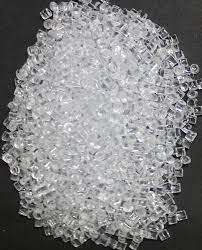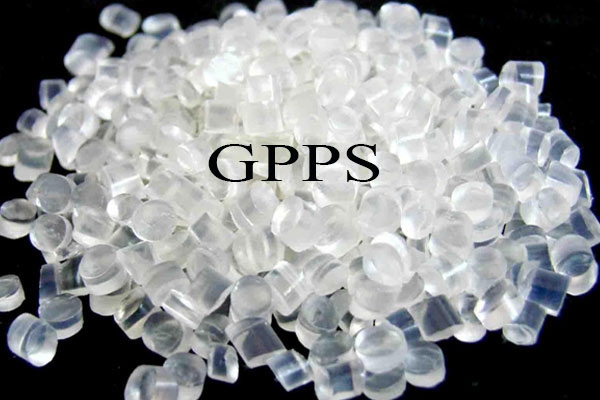What do you know about Properties of General Purpose Polystyrene ? Today, polystyrene polymer is one of the most widely used polymers in the world after polyethylene. The main advantage of this product, in addition to high transparency, is that it can be easily converted into efficient products by molding. One of the most widely used grades of this material, which is used for general purposes, is General Purpose Polystyrene (GPPS), which is also known as Crystal. Properties of natural polystyrene such as heat resistance, operating temperature, flow and fluidity properties, dielectric and strength properties, and impact resistance of general purpose polystyrene product (GPPS) are optimized. It is widely used to make disposable tableware, electronics such as televisions and radios, sports equipment, toys, and household appliances.
Advantages of general purpose polystyrene (GPPS)
Advantages of general purpose polystyrene (GPPS) include transparency, high rigidity, good dimensional stability, good electrical properties, gamma-ray resistance, and low price. In addition to these advantages, this product also has disadvantages and limitations.
The most important disadvantages are fragility at ambient temperature, poor mechanical properties at temperatures above 70 ° C, high flammability, poor chemical resistance, especially against organic solvents, and sensitivity to ultraviolet radiation.
In the continuation of this article, we will get acquainted with the types of physical, mechanical, thermal, electrical, and chemical properties of general purpose polystyrene (GPPS).
Physical properties of general purpose polystyrene (GPPS)
General purpose polystyrene (GPPS) or crystal is polystyrene with an amorphous and irregular structure that has a shiny glassy appearance. In general, van der Waals bonds (intermolecular forces) play a major role in determining the physical properties of a substance; Therefore, the physical properties of general purpose polystyrene (GPPS) are derived from weak van der Waals bonds between the chains of this polymer.
As the temperature rises, the van der Waals bonds become weaker, causing the molecular chains that make up the material to slide over each other. For this reason, general purpose polystyrene (GPPS) will be very elastic and soft at temperatures higher than the transfer temperature of its glass.
The table below shows the most important physical properties of general purpose polystyrene (GPPS).
| Property | Unit | Amount |
| Density | g/cm3 | 1.04 – 1.05 |
| Specific density | % | 1.04 – 1.09 |
| Concentration | % | 0.1 – 0.7 |
| 24 hour water absorption | % | 0.01 – 0.04 |
| Refractive index | % | 1.58 – 1.59 |
| Distribution | % | 88 – 90 |
| Matte amount | % | 0.1 – 1.1 |
Mechanical properties of general purpose polystyrene (GPPS)
The mechanical properties of a polymer include properties such as strength, tensile strength, modulus, impact strength, and compressive strength of the material. The crystalline form of general purpose polystyrene (GPPS) polymers shows low impact strength.
General purpose polystyrene (GPPS) polymer is also degraded by exposure to sunlight due to the occurrence of optical oxidation phenomenon and its mechanical properties are affected.

GPPS uses
The following table shows the mechanical properties of general purpose polystyrene (GPPS).
| Property | Unit | Amount |
| Tensile modulus or Young’s modulus (elasticity) | Mpa | 3000 – 3600 |
| Tensile strength | Mpa | 30 – 60 |
| Tensile strength at the breaking point | Mpa | 30 – 40 |
| Tensile strength at the yield point | Mpa | 30 – 40 |
| Elongation at the breaking point | % | 1 – 5 |
| Increase the length at the yield point | % | 1 – 5 |
| Strain modulus | Mpa | 1400 |
| Flexural strength | Mpa | 76 |
| Flexural modulus | Mpa | 3200 |
| Tension modulus | Mpa | 1200 |
| Rockwell Hardness | M | M65 – M80 |
| Shore D Hardness | – | 85 – 90 |
Thermal properties of general purpose polystyrene (GPPS)
Thermal properties include a set of material properties that show up when exposed to heat. Among these properties, we can name the glass transition temperature, thermal conductivity, thermal expansion rate, and so on.
General purpose polystyrene (GPPS) is a hard thermoplastic material that is solid or glassy at normal temperatures and melts as the temperature rises without any chemical change. This substance, when heated above the glass transition temperature of its glass, turns into a liquid phase and flows. In this case, it can be used for molding or extrusion processes.
The values in the table below show the thermal properties of general purpose polystyrene (GPPS).
| Property | Unit | Amount |
| Lowest operating temperature | ° C | 20 |
| Highest operating temperature | ° C | 60 |
| Glass transfer temperature | ° C | 100 |
| Thermal decomposition temperature | ° C | 300 |
| Flame temperature | ° C | 402 |
| Specific heat capacity | cal / ° C. g | 0.32 |
| Thermal conductivity (at 0 ° C) | W / m. K | 0.105 |
| Thermal conductivity (between 25 ° C to 100 ° C) | W / m. K | 0.14 |
| Thermal expansion | μm / m. K | 120 |
| Softening temperature (wick) | ° C | 100 |
| Percentage of distribution | % | 87 |
| Thermal failure temperature | ° C | 95 |
Electrical properties of general purpose polystyrene (GPPS)
Electrical properties are the properties that determine the response of a substance to an electric field. The table below shows the values of electrical properties for general purpose polystyrene (GPPS).
| Property | Unit | Amount |
| Dielectric power | MV / m | 20 |
| Dielectric constant | (In one MHz) | 2.5 |
| Volumetric electrical resistance | ohm-cm | >1016 |
| Arc resistance | Sec | 70 |
Chemical properties of general purpose polystyrene (GPPS)
General purpose polystyrene (GPPS) is chemically inert and does not react with many materials, but is soluble in some organic solvents. Many of the chemical properties of general purpose polystyrene (GPPS) are the result of the unique properties of the element carbon.
This product is highly flammable and burns with a yellow-orange flame and, like all aromatic hydrocarbons, produces carbon particles or soot during combustion. In the complete oxidation of general purpose polystyrene (GPPS), only carbon dioxide and water vapor are produced.

